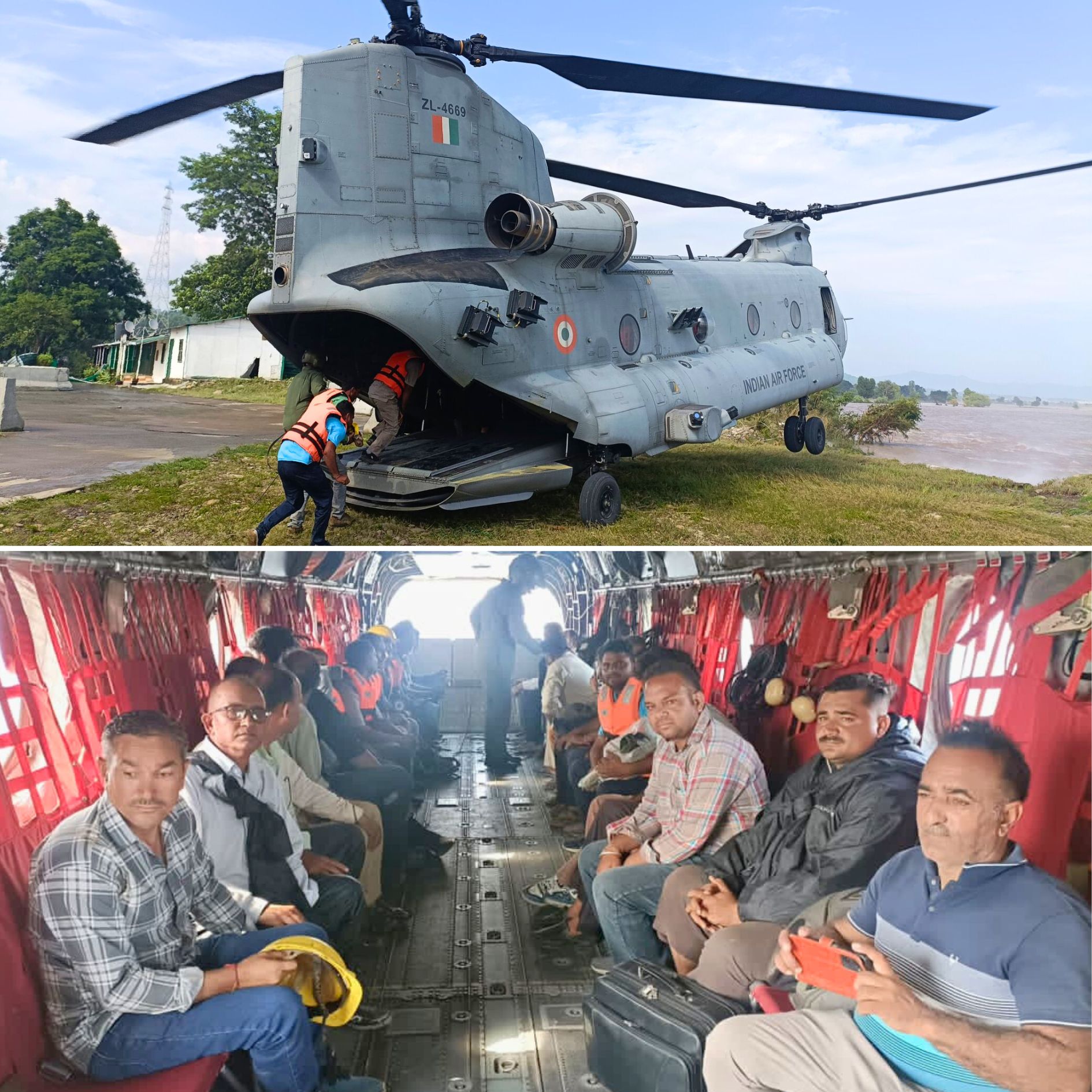The Indian Air Force (IAF) has intensified relief and rescue operations in response to severe flooding caused by relentless monsoon rains in Jammu and parts of Punjab. Heavy rainfall has caused rivers to overflow and widespread devastation, leaving thousands stranded and affecting over a thousand villages.
The Ministry of Defence confirmed deployment of helicopters for rapid evacuation and supply delivery, underscoring the gravity of the natural disaster.
How Is the Indian Air Force Responding to Jammu and Punjab Floods?
To combat the flooding crisis, the IAF deployed five Mi-17 helicopters and one Chinook helicopter from Northern Sector bases. These aircraft are conducting evacuations, medical supply drops, and transport of essential goods to inaccessible areas.
Several additional helicopters remain on standby, prepared to support urgent needs if conditions worsen. A spokesperson from the Ministry of Defence emphasised, “Our personnel are tirelessly working to save lives and provide aid.” Government officials have praised the swift air force intervention as crucial in mitigating the flood’s impact.
In Jammu’s Akhnoor area, IAF helicopters helped rescue 12 Army troops and 11 Border Security Force personnel, including women officers. In Punjab’s Pathankot region, 46 civilians were evacuated, and over 750 kilograms of food and clean water were dropped to isolated communities.
In Dera Baba Nanak, dangerous winching operations saved 38 Army and 10 BSF personnel from flooding. These coordinated efforts between the IAF, Army, BSF, NDRF and local authorities have been vital in saving lives and delivering aid during this severe flood crisis. Skilled crews and modern aircraft continue rescue missions amid difficult conditions, standing ready to respond to emergencies as the situation evolves.
District wise Helpline numbers
— Divisional Commissioner Jammu (@Divcomjammu) August 26, 2025
For Emergency please contact the following numbers: https://t.co/an6QeFeZuE pic.twitter.com/SVLiiq8CiB
What Are the Current Conditions and Impact of the Floods?
Jammu has experienced unprecedented rainfall, receiving over 600 millimetres in days, more than seven times the normal average. The region has witnessed destructive flash floods and deadly landslides, including one near the Vaishno Devi pilgrimage route that claimed 33 lives.
In Punjab, swollen rivers such as the Ravi, Sutlej, and Beas have submerged large areas, compelling mass evacuations and shutting down roads. Local governments have activated emergency protocols, including school closures and mobilisation of state helicopters for relief work. Communication challenges persist due to disrupted infrastructure.
What Is the Regional and Cross-Border Context of the Floods?
The ongoing floods are part of a broader monsoon crisis affecting northern India and Pakistan’s Punjab province. Indian authorities have opened dams to reduce upstream water levels, though this has increased flooding downstream across the border.
Pakistan reports over 800 monsoon-related deaths this season, highlighting the transnational scale of climate vulnerability. Damage to roads, bridges, electricity, and water systems in Jammu and Punjab is extensive, hampering relief efforts and prolonging community hardships. Meteorologists warn of continued heavy rainfall, necessitating ongoing vigilance.
The Logical Indian’s Perspective
The Logical Indian views this crisis as a reminder of the urgent need for climate-resilient infrastructure and empathetic governance.
While immediate rescue operations led by the Indian Air Force save lives, long-term planning must prioritise environmental sustainability and disaster preparedness. Compassionate actions, through coordinated government efforts and community solidarity, can foster hope and resilience amid devastation.
@IAF_MCC and @hqwaciaf swiftly responded to the emerging flood situation in Punjab and Jammu regions and deployed helicopters and transport aircraft to support rescue efforts. Over 15 sorties have been flown rescuing over 110 souls.
— PRO Defence Palam (@DefencePROPalam) August 27, 2025
Full details 👇👇https://t.co/1sV7wV9OM1 pic.twitter.com/nK2Lg9cvPt











